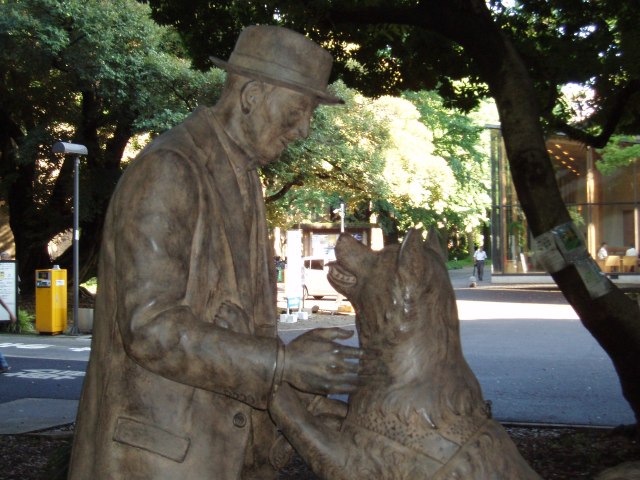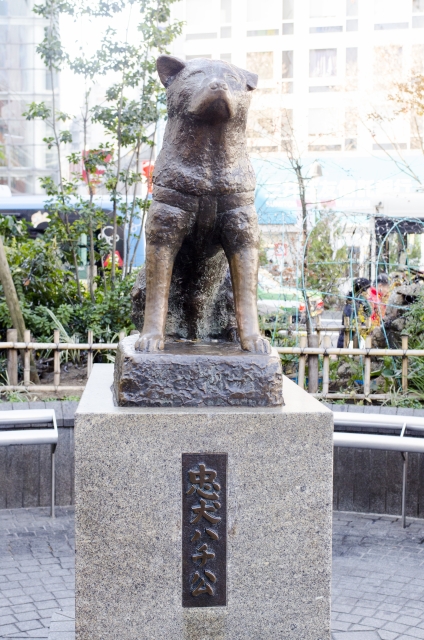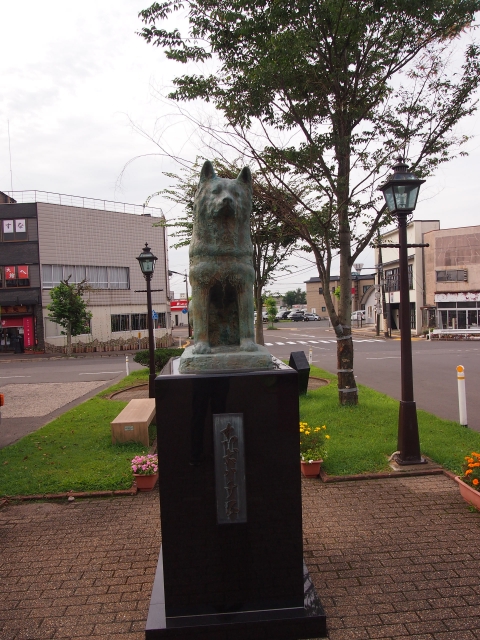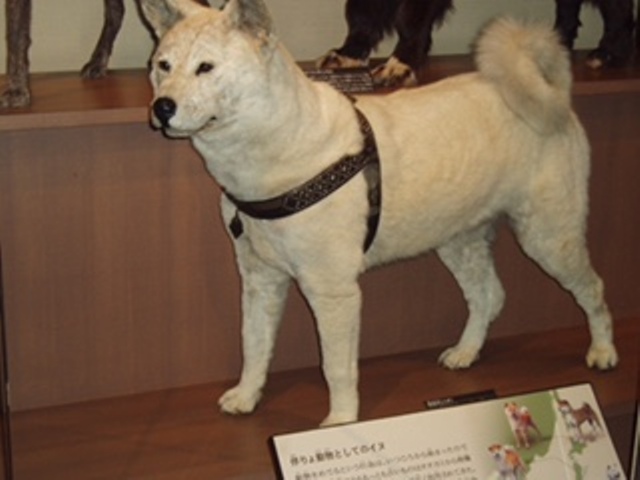There used to be a dog named Hachi-Ko(Admirable Hachi) that had kept going to JR. Shibuya Station to meet its late master every day for almost 9 years.
Hachi-Ko has widely been known to be a faithful dog to most of Japanese before World War II.
It was a breed of typical Japanese dog called “Akita-Ken” which was bred for fighting and noticed in Akita prefecture in Japan.
Hachi had been kept as a pet by Professor Eizaburo Ueno of agricultural department in the University of Tokyo, who died of cerebral bleeding in 1925.
On March last year, professors and students of the university erected a statue of Professor Ueno facing Dog Hachi at the site near to the main gate of the campus in memory of the 90th anniversary after Ueno’s death.
This event was reported by a newspaper and it became talk of the town.

As for the Hachi-Ko, the statue being installed near to JR Shibuya Station is well known to the public in general.
This statue was rebuilt second time in 1948 since the first statue built in 1934 had been melted to produce the parts for trains under “Metal Acquisition Law” during the World War II.
Shibuya is a fashionable youngsters’ town in Tokyo. They meet each other at the statue as their landmark.
Helen Keller who was a deaf/blind American author, political activist and lecturer, visited the statue and examined its configuration by feeling with her hands during her stay in Japan.
She was so much impressed by the admirable story of Hachi that she kept an Akita dog named “Kamikaze” as pet in her resident in U.S.
Also a famous actor Richard Gere visited the statue of Hachi.
He played the character of professor Ueno in the movies with the title of “ Hachi” A Dog’s Tale”.
In 1987 another statue of Hachi was erected in front of Ohdate station in Akita prefecture where Hachi was born.
Both statues are a simplex dog statue of Hachi.


The statue in the University of Tokyo differs from those at other places. Ueno and Hachi are facing each other.
Hachi is cheerfully offering its forelegs to Ueno, rising on its hind legs, while Ueno is supporting its right forepaw with his left arm and caressing its neck with his fingers with a smile.
We can feel a sincerity showed by Hachi to its master and also an affectionate response made by Ueno from this statue.
It’s really a heartwarming scene and it heals us whenever we see the statue.
Hachi was stuffed after its death and it is being displayed in the National Museum of Nature and Science in Ueno Park.
His stone monument was erected by Ueno’s gravestone in Aoyama cemetery in Tokyo.
In addition, the tale of Hachi was taken up in movies, anime and old ethics textbook of elementary schools.
Many people have deeply been moved by its loyalty to master regardless of time and place.
People have fed dogs as pet, watching, hunting, and fighting since ancient times.
In the middle of Edo Period(around 330 years ago), the 5th Shogun, Tsunayoshi Tokugawa issued the law forbidding cruelties to all living creatures and thereby dogs were especially protected.
In Egyptian Mythology, dogs were considered as god named Anubis that conducted funeral ceremonies.
The Anubis was said to mummify a corpse of a person and buried it.
Nowadays it is said that Japanese at the rate of 1 out of 5, are keeping a dog as their pet.
The dog is playing a therapist to heal the loneliness of elderly people and relaxing stress of
workers.
There have been various styles of relationship between a human and a dog, from time to time or area to area.

Once visiting the statue of Hachi in the University of Tokyo which is looking up at Professor Ueno, we would be able to perceive something like a deep friendship or comradeship rather than the relationship between a master and a dog.
It is surprising indeed to find that the Akita-dog strain developed for fighting can be tamed by human.
This statue shows us such a moving scene that Hachi could meet the Professor Ueno after his 90 years absence.
This site is 3 minutes walking distance from No.1 exist of Todai-Mai Station on Nanboku-Line subway. After sunset,we will be able to see the statue with a different visual impression in the spotlight.
